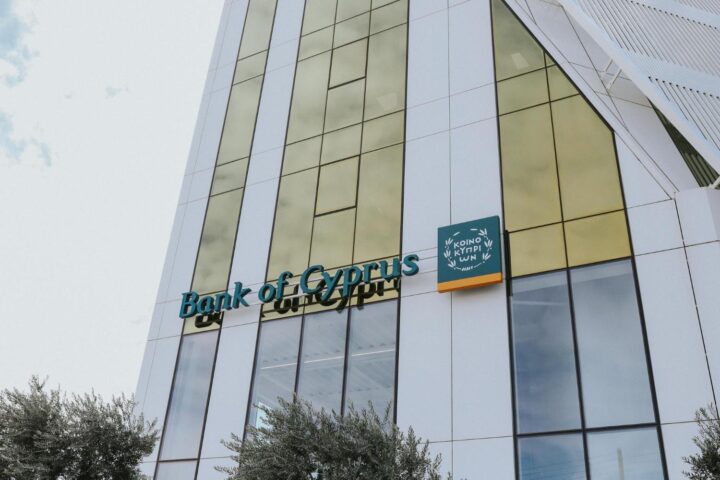Capital Intelligence Ratings has affirmed the Republic of Cyprus’ long-term foreign currency rating (LT FCR) and short-term foreign currency rating (ST FCR) at ‘BBB-’ and ‘A3’, respectively, saying that the outlook on the ratings remains ‘stable’.
The ratings reflect the demonstrated resilience of the economy and improving fiscal fundamentals, with the budget position returning to surplus and general government debt declining at a faster-than-expected pace.
Capital Intelligence said the government continues to proactively manage debt by securing its financing needs through timely market access while maintaining a substantial cash buffer to counter short-term shocks and external adversities.
Government contingent liabilities from the banking sector have declined significantly in recent years, although they remain comparatively high. Other fiscal risks currently appear manageable, notwithstanding the challenging external environment and tightening global financial conditions.
Cyprus’ ratings are also supported by the benefits of European Union and eurozone membership, including the availability of financial support from the Recovery and Resilience Facility (RRF).
The ratings continue to be supported by high GDP per capita, as well as improving policy predictability.
Capital Intelligence added the ratings remain constrained by very high external financing needs (including a large current account deficit) and relatively high, albeit declining, public debt, as well as by the significant debt overhang in the private sector and the slow pace of resolving the non-performing assets that were transferred outside the banking sector.
Moderate institutional weaknesses and persisting geopolitical risk factors also continue to weigh on the ratings.
Economic growth has exceeded CI’s projections.
Real GDP grew by a higher-than-projected 5.6% in 2022, compared to 6.6% in 2021, thanks to a robust recovery in tourism and other sectors such as transportation, information and communications, and wholesale and retail trade.
Despite the absence of the Russian market – which accounted for nearly 25% of total tourist arrivals in 2021 – the tourism sector posted strong growth in 2022, with tourist arrivals increasing to 3.2 million, compared to 1.9 million in 2021. This increase was mainly due to arrivals from the United Kingdom, Israel, Poland, Germany and Sweden.
Growth to ease
Going forward, CI expects real GDP growth to ease to 3.0% in 2023, before picking up to 3.2% in 2024. This is based on our expectation that external adversities will persist throughout the forecast horizon, with high hydrocarbon prices and tighter monetary policy in the eurozone weighing on both domestic and external demand.
Nevertheless, economic growth will continue to benefit from investment in numerous economic activities supported by RRF funding. The authorities are expected to have received EUR 255 mln from the RRF in 2022, with the disbursement of the remainder conditional on the implementation of structural reforms that target the public, energy, legal and digital sectors.
The public finances continued to improve in 2022, with the general government budget balance posting an overall surplus of 2.3% of GDP, and a primary surplus of 3.7%, thanks to a higher than projected increase in tax revenues.
CI said it expects the overall general government budget position to remain in surplus, averaging 1.9% of GDP in 2023-24, compared to our previous projection of 1.1%. Reflecting the improvement in the budget position, general government debt declined significantly to a still high 87.1% of GDP in 2022, and is on course to reach 75.5% in 2024.
Risks to the fiscal outlook persist and outcomes could be weaker than envisaged if fiscal discipline declines or spending on subsidies, social welfare and public sector wages is hiked to ease the impact of rising inflation.
Other risks to the budget stem from the increasing cost of the national health system (GESY) and a potential decline in tax revenues should downside risks to GDP growth materialise. At present, CI considers the impact of higher risk premia and tighter eurozone monetary policy on the public finances to be manageable due to the decline in general government debt and the fact that 71% of the debt stock bears a fixed interest rate.
Risks manageable
Short-term refinancing risks currently appear manageable and have remained stable since our last review. This is attributable to the government’s sound fiscal management, favourable debt maturity structure and timely access to capital markets, as well as the prudent building of cash buffers that cover 100% of gross financing needs for at least the next nine to twelve months.
As a member of the eurozone, the government has benefitted from various programmes that have helped to ease fiscal stress in times of need. The accumulated net purchases of Cypriot government bonds that are held by the eurosystem in the context of the Public Sector Purchases Programme (PSPP) and the Pandemic Emergency Purchases Programme (PEPP) stood at EUR7.03bn in March 2023 (25% of projected GDP in 2023).
CI noted that investor sentiment towards Cypriot government debt has remained positive despite the progressive tightening of monetary policy in the eurozone and the gradual reduction of asset purchasing programmes. This is evidenced by the results of the government’s latest 10-year EUR 1 bln sustainable bond issue, which was 12 times oversubscribed.
The bond attracted a diversified range of private investors, banks and hedge funds, mainly from Europe and the United Kingdom.
In CI’s view, debt maturities – which are estimated at EUR 1.4 bln (5.0% of GDP) in 2023 and EUR 2.4 bln (8.2% of GDP) in 2024 – are within the repayment capacity of the government and do not pose any refinancing challenges at present.
The rating agency’s baseline scenario assumes that any increase in refinancing risks as a result of a prolonged economic impact of the war in Ukraine on the eurozone would be absorbed by appropriate measures that could be introduced by the ECB.
External strength is moderately weak, reflecting a large current account deficit and high external debt. The current account deficit increased to 9.5% of GDP in 2022 (6.8% in 2021), while external debt declined to 620.8% of GDP in December 2022, compared to 699.5% in December 2021.
Despite this, Cyprus still enjoys a net creditor position if the assets of non-financial corporates and other sectors are included and the debt of Special Purpose Entities is excluded.
Banking sector strength remains moderate despite ongoing efforts to strengthen banks’ balance sheets, and continues to weigh on the ratings. Asset quality is affected by the debt overhang in the household and corporate sectors, which accounted for 55.6% and 41.8% of total non-performing loans (NPLs), respectively, in December 2022.
CI noted that the elevated debt level in both the corporate and household sectors could lead to the formation of new NPLs in the context of tighter monetary policy and stricter lending conditions. Against this background, the aggregate NPL ratio declined further to 9.5% of total loans in December 2022 (from 11.4% in March 2022).
Furthermore, accumulated provisions increased to a healthier – but still below prudential – 47.5% in December 2022, compared to 43.4% in December 2021. Nevertheless, banks’ capital adequacy remains satisfactory, with the average Common Equity Tier-1 ratio hovering around 19.7% at end-December 2022 – well above the regulatory minimum and EU average.










